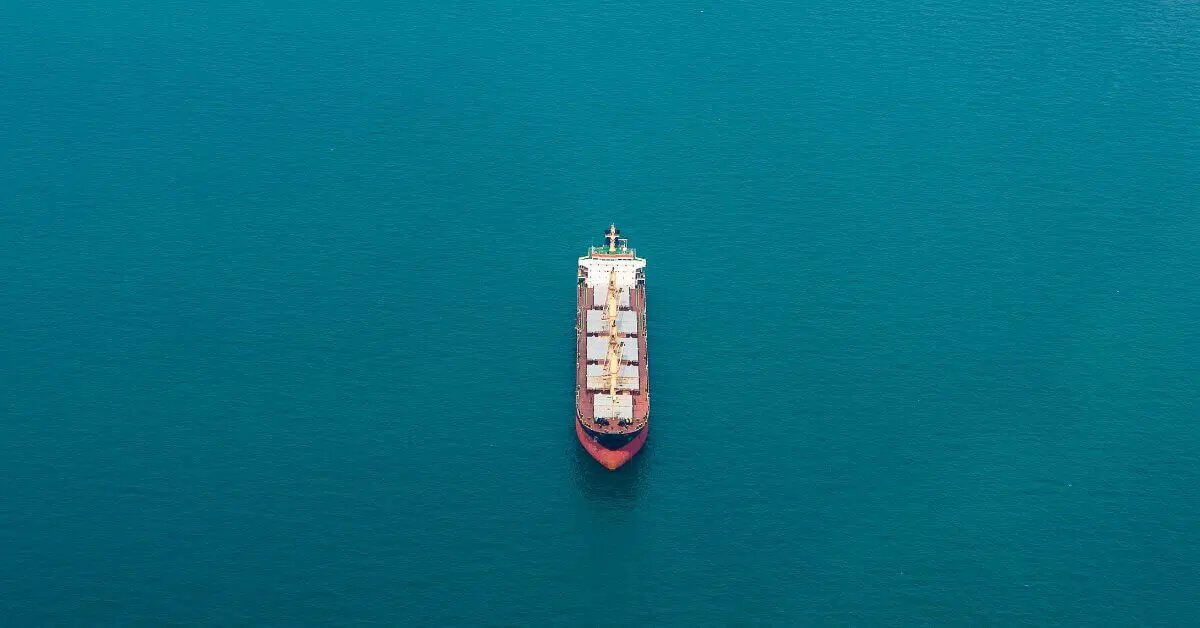/Reuters Agency
The United States and China began on Tuesday, October 14th to apply additional port tariffs to shipping companies, turning international waters into a key front in the trade war between the world’s two largest economies.
A resumption of a full-scale trade war seemed imminent last week, after China announced a major expansion of its controls on the export of rare minerals and President Donald Trump threatened to increase tariffs on Chinese products.
But after the weekend, both sides sought to reassure traders and investors, highlighting the cooperation between their negotiating teams and the possibility of finding a solution.
China announced that it had begun charging the special fees to vessels linked to the United States, whether by ownership, operation, construction, or flying the flag of the North American country, but clarified that vessels of Chinese origin would be exempt from these charges.
In the details published by the state broadcaster CCTV, China specified the provisions on the exemptions, which also include empty vessels entering shipyards in the Asian nation for repairs.
The additional port tariffs imposed by China will be charged at the first port of entry for a single voyage or the first five voyages within a year, following an annual billing cycle starting April 17th.
Earlier this year, the administration of US President Donald Trump announced plans to impose tariffs on vessels linked to China in order to weaken the country’s control over the global maritime industry and strengthen US shipbuilding.
An investigation conducted during the administration of former President Joe Biden concluded that China uses unfair policies and practices to dominate the maritime, logistics, and shipbuilding sectors globally, which paved the way for these sanctions.
China responded last week, announcing that it would impose its own port tariffs on ships linked to the United States starting the same day the US tariffs went into effect.
Analysts predict that the Chinese shipping company Cosco Shipping will be the most affected, bearing nearly half of the estimated $3.2 billion cost in that segment by 2026.
China’s Ministry of Commerce urged the United States to “rectify its wrong practices” and opt for dialogue and consultation instead.
“If the United States chooses confrontation, China will carry it through to the end; if it chooses dialogue, China’s door remains open,” it stated.
In a related move, Beijing also imposed sanctions on Tuesday against five US-linked subsidiaries of the South Korean shipyard Hanwha Ocean, which it accused of having “assisted and supported” a US investigation into Chinese business practices.
Hanwha told Reuters it is aware of the announcement and is carefully reviewing the potential business impact for the company.
Hanwha Ocean shares fell nearly 6%.
China has also launched an investigation into how the US inquiry has affected its shipping and shipbuilding industries.
Fear
“This symmetry of retaliatory actions locks both economies into a spiral of maritime taxes that threatens to distort global cargo flows,” Athens-based firm Xclusiv Shipbrokers Inc said in an analysis note.
A Shanghai-based consultant – who advises global companies on trade with China – commented that the new tariffs might not be so disruptive for the industry and that any cost increases would likely be passed on to higher prices.
“What are we going to do? Stop shipping goods? Trade with the United States is already quite disrupted, but companies are finding a way,” said the consultant, who asked to remain anonymous as they were not authorized to speak to the media.
The United States announced on Friday, October 11, an exception for long-term lessees of vessels operated by China that transport US vehicles, ethane, and liquefied petroleum gas (LPG), deferring the collection of port fees until December 10.
However, maritime tracking firm Vortexa identified 45 VLGC vessels carrying LPG – 11% of the total fleet – that would still be subject to Chinese port fees, according to Americas analyst Samantha Hartke.
Clarksons Research stated in a report that the new tariffs could affect tankers representing 15% of global capacity. Jefferies analyst Omar Nokta estimated that 13% of the world’s tanker fleet and 11% of the container ship fleet would be affected.
Retaliation
In retaliation for Chinese restrictions on the export of critical minerals, Trump threatened last Friday, October 11, to impose additional 100% tariffs on Chinese products and establish new controls on the export of “all critical software” before November 1.
Hours later, officials from his administration warned that countries voting in favor of the UN’s International Maritime Organization (IMO) plan to reduce shipping’s greenhouse gas (GHG) emissions could face sanctions, port bans, or punitive charges on their vessels. China has publicly expressed its support for the IMO plan.
“The weaponization of both trade and environmental policy indicates that shipping has ceased to be a neutral channel of global trade and has become a direct instrument of state diplomacy,” said Xclusiv.
Shares of Cosco Shipping, which is listed in Shanghai, rose more than 2% in early trading on Tuesday the 14th. The company announced that its board of directors approved a plan to buy back up to 1.5 billion yuan ($210.3 million) in shares over the next three months to maintain corporate value and protect shareholders’ interests.





